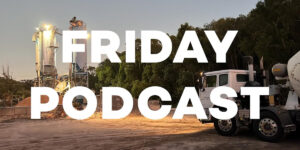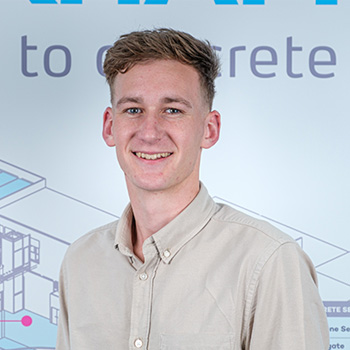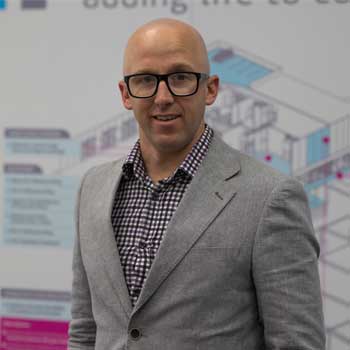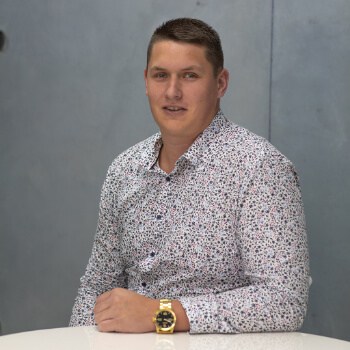Once again Doug and Laike sit down for a 10 minute recap from the week. Where is Seychelles? Why did Laike visit readymix plants? And – surprise – Henry is brought in by phone. Definitely off the cuff!
Doug & Laike Share Their Week – Seychelles, Readymix Plants, And A Bike Ride

Invisible Strength
Doug & Laike Share Their Week – Seychelles, Readymix Plants, And A Bike Ride
/
RSS Feed
Doug & Laike Share Their Week – Seychelles, Readymix Plants, And A Bike Ride
Concrete protection for marine infrastructure https://markhamglobal.com/industries/marine/
Seychelles https://www.seychelles.com/home
View the Transcript
DOUG: All good to go there, mate?
LAIKE: Sort of. That should do it.
DOUG: Yes. Looks good. Right? What’s going on?
LAIKE: Oh, not a lot. Yourself?
DOUG: Friday podcast?
LAIKE: Yes.
DOUG: Yes. Reckon we can make this a regular thing?
LAIKE: Yes I reckon we should make this a regular thing. But, yes, another week done. What was your highlight this week?
DOUG: I think this week it was the order we, got for Seychelles. So that’s a luxury hotel that they’re building over there. Or, sorry, maintaining, I should say. Some of it’s actually suspended out over the water, and they’re just working at, remediating, protecting the concrete as they can sort of each year, each maintenance shift.
LAIKE: Do you want to explain in the viewers whereabouts that is in the world?
DOUG: Yes. A lot of you will know, if you’re used to traveling, but it’s off the coast of Africa. So, sort of further south. We can probably show a little map of where it is, but yes, very, very nice location. It’s, yes, a bit of a holiday destination and… But being able to protect that concrete, right on a critical asset. There’s people in the hotel all the time. And they obviously can’t afford to let that, you know, degrade and, you know, worst case, have it fail, or they need to do major repairs. Yes. But being able to just chip away, they can just protect a certain amount every few months. And, you know, as the budget allows, and they go from there. So. Yes. That’s a good one. So that was the AQURON 7000. What’s your understanding of that product, by the way?
LAIKE: Yes, so the AQURON 7000… obviously you’re in that kind of, civil space, but…
DOUG: No, I just thought it would be good if you tell… have a shot at explaining; and helps you learn and helps everyone else learn.
LAIKE: Yes. yes, exactly. So generally it’s like, used in marine. A lot of, you know… sea water can corrode steel if no concrete is treated. So the AQURON 7000 is pretty much what is designed to protect against those harsh marine environments that we see, you know, around the world. But obviously there’s all the wharves and stuff that you see have been built many, many, many years ago, and the concrete is starting to eat away. And then the steel’s getting rusty and corroding, which obviously affects the structural support of the whole entire wharf. So with that AQURON 7000, you’re pretty much protecting against any corrosion from that seawater.
DOUG: Yes, that’s right. Yes. So it’s often done where a structure is starting to show signs of deterioration. So if it’s showing cracking or spalling or staining, often when a repair process is done or cycle of repairs is done, you know, by keeping that structure in that same condition, and preventing, you know, that further maintenance spend being required.
But yes, just been for a bike ride, too. So we did a 21.7km bike ride around Napier. Beautiful day. Our CEO Mark arranged for a couple of beers to be dropped off mid bike ride, so that was a bonus.
LAIKE: So the whole team was out there, all of the staff in the Napier office, which is where we’re based, here in New Zealand. We all went on for a little Tiki tour around the bay, which is good, given the sun.
DOUG: What’s your highlight of the week anyway, Laike?
LAIKE: Highlight for me would be, Wednesday I headed up to Auckland with Hayden Prestidge, he’s our Sales Manager for Australia and New Zealand. So we did a little joint trip up to Auckland there. Visited a couple of readymix plants, which is very interesting. Myself, I haven’t done so much…
DOUG: Yes, nice. It is interesting to figure out how it that critical pathway of construction happens.
LAIKE: Yes it’s definitely a good eye-opener and learning for all. Yes, just catching up with, a couple of concrete placers and a few main contractors too, about projects that are coming up, in our pipeline. So it’s always good to obviously educate everyone that you see of the benefits of what we can provide. And there’s always that thing about if something does happen down the line.
DOUG: Yes. Just going to try and get hold of Henry and see if he can chip in!
HENRY: G’day Doug, how are you going?
DOUG: Yes, yes, good, how about yourself?
LAIKE: Hey, Henry. How you doing?
HENRY: Yes, not too bad. What’s cracking?
DOUG: Hey, just off the cuff. We’re just in the studio here, with Laike and myself, and he’s been just talking about going and actually getting onto a readymix site and seeing how it actually all happens. It’s been a great experience this week. I’ve talked about the order in Seychelles, and protecting in the marine environment there. But wondering if you could just sort of, off the cuff, ad-lib, what do you call it? What’s one thing you wish, every architect or every designer knew about concrete? Is there any one thing that stands out?
HENRY: Ooh, you have caught me off the cuff actually there Doug!
DOUG: What about curing of concrete? Is there anything around that that you wish everyone knew?
HENRY: Oh, that’s probably not so much architects maybe just consultants. Oh no. There’s not one thing that I wish that they’d learn, as such. You know, it’s always good talking to consultants because you always learn a lot yourself.
So what’s going on? The market’s quite bit quiet out at the moment, so sometimes they’re a little bit hard to get hold of. But I guess letting us know how they like to be contacted is always good. It’s probably not so much a technical thing.
DOUG: Yes, that’s good!
HENRY: But, yes, whether it’s text or phone calls or emails or… but it’s just whatever works for them.
DOUG: Yes. That’s actually really good. I mean, we’re going to reach out to them. We need to know what’s going on with projects…
HENRY: Yes, don’t want to…
DOUG:…what’s going on in the game. But yes, that’s a top tip.
HENRY: Yes, the point is we’re trying to help. I guess also for us, to know and be aware of the stage of their project, because it’s no point me coming talking to somebody, an architect or engineer, about a concrete slab, when they are going through the final sign off of the building that’s almost finished.
DOUG: Yes.
HENRY: That’s just dumb on my part. So doing our homework and finding out early where they’re at in the project as well, is always a good thing.
LAIKE: Yes, I guess it also comes down to relationship building. You know, if you’re meeting customers regularly, just keeping that ongoing relationship with them, building that trust with that customer, they’re able to help you out and you can help them in return. So, yes, in projects going forward.
HENRY: And we’re not just trying to get … here at MARKHAM we’re not just going to sell a product. Not every project is going to need AQURON 2000 or need some different MARKHAM system. But just finding out from them early on and giving the advice. I mean, there’s probably a couple of hundred years combined knowledge here at MARKHAM, across Aussie, New Zealand and UK. And the thing is we can… if we don’t know, if we can’t help them, we can point them in the right direction as well, to industry leaders that we get on well with. Does that help?
DOUG: Yes that’s awesome, that’s really good. And, what was your favorite part about the bike ride that we’ve just been on? Did you bike home as well?
HENRY: No I’m not quite home yet – but just getting out and about with the team. That’s MARKHAM, it’s a good place to work. You can do the fun stuff as well.
DOUG: Brilliant!
HENRY: But you guys go and have a darn good weekend. And see you on the Monday.
DOUG: All right!
LAIKE: See you, mate.
HENRY: Roger!
DOUG: Oh, that was good.
LAIKE: Yes that was good.
DOUG: I didn’t expect him to quite go at that angle, but that’s actually really good to… yes, just to be upfront, we’re not going to stop contacting consultants and builders about projects, but hey, if it’s the wrong stage or you don’t like one particular way that we’re contacting you or something, just let us know. We’re humans. We don’t mind if you’re blunt to us or … Let us know what’s the preferred method.
LAIKE: Yes. And I guess that could always even help the listeners as well. Like with their own business, you know, like just knowing about when the right time is. Because at the end of the day you don’t want to be contacting them at the wrong stage and then eventually they start getting, I guess you could say, maybe annoyed or…
DOUG: Yes.
LAIKE: …that’s always that question, the good old question is, When would be a good time to get back in touch?
DOUG: Yes.
LAIKE: They give you a date and then you know where to go from there.
DOUG: Yes. That’s good. Awesome! Well that’s it for Friday. We’ll see you next Friday.
LAIKE: Yes.
DOUG: …or on the next podcast! Thanks team.
LAIKE: Thank you.
Want to Contribute?
Feedback on our podcasts? Suggestions for future topics? Looking for more information on topics we’ve discussed? Send us a message – we’ll be in touch within a day or two.
More about MARKHAM
MARKHAM are dedicated to providing innovations for concrete and construction. Focusing on concrete waterproofing solutions, penetrating concrete sealers and durability treatments for concrete.
Podcast Categories
Latest Episodes

Doug & Laike Share Their Week – Western Australia, Christchurch, and a Focus on Low Carbon Concrete
Laike and Doug wrap up their week again with a 10-minute chat. They’ve each been

Doug & Henry Share Their Week – R&D, Melbourne Traffic, Basement Waterproofing, And ‘CONQOR Your Health’
It’s Henry’s turn to join Doug in the podcast studio – in person this time!

Doug & Laike Share Their Week – Seychelles, Readymix Plants, And A Bike Ride
Once again Doug and Laike sit down for a 10 minute recap from the week.
invisible strength podcast
The whole MARKHAM team is pleased to present you with our podcast series, INVISIBLE STRENGTH. In this series of interviews, we’ll walk through the science and challenges of concrete durability, what goes wrong in the field – and the advanced methods available to restore and enhance service life to concrete construction.
INVISIBLE STRENGTH reflects a number of factors in concrete construction and durability. When things go wrong, the evidence can become very visible indeed. However, when all is going well, there’s nothing particular to be seen!
MARKHAM’s concrete treatments, too, are invisible once completed – and the result is the long internal, invisible durability of the concrete.
So join us as we explore the unseen world inside concrete – why it matters, and how it can be protected!


